07.31.58
It's so very depressing to see a building demolition play out in slow motion, as the actors involved repeat the same mistakes that have led Durham to the demolition of so many historic structures. It's even more depressing to have the palpable evidence that the choice to demolish is a mistake, and yet not be able to avert that mistake because steps in the process are treated as inevitabilities rather than choices.
02.21.09
I've written about the 1930 construction of the Graybar building in
one of my typical posts. The demolition of the Graybar Building began in 1993 , when it was leased (with an option to purchase) by the City of Durham, which utilized the building for storage space. Akron Properties, the owner, conveyed the property to Harry McKaig on 01/21/94.
The city utilized the building for storage throughout the 1990s (and copious city junk/files still sit in the building.) Deferred maintenance began to catch up with the building during this period. The flat, built-up roof is periodically punctuated by pyramidal skylights that protruded/protrude ~2 feet above the roof surface. These are visible in the historic photo above. While attractive, these 1930s-era skylights certainly require ongoing care and maintenance to prevent leakage.
In 1998, the city exercised its option to purchase the building.
The city never appears to have made a strong effort to promote the redevelopment potential of the building. Although it appeared as surplus property during the late 1990s/early 2000s, the city took, at most, a passive role in its fate. As with other surplus property, there appears to have been no effort to gauge the strategic potential of the structure in the framework of downtown redevelopment, context, historic value, etc. - it was simply real estate.
In 2005, the Triangle Transit Authority began to purchase and assert eminent domain to acquire the triangle of land between South Duke St., West Chapel Hill St., and the railroad tracks for a downtown Durham station to accompany the Durham-Raleigh rail transit line that the group intended to build. "Station-Area Development Guidelines" promulgated by the TTA envisioned walkable, pedestrian-scale, mixed-use development around stations to create a hub of commercial and residential uses that would compliment the provision of rail transit and make use of existing infrastructure.
The Graybar building was acquired by TTA from the city for $165,000 on January 10, 2005. In March of 2005, TTA received site plan approval to demolish all structures in the 'triangle', including the former A&P (utility payment center), the old Esso/Exxon station, the Graybar Building, and the former Thomas and Howard warehouse - more commonly known as "the unfinished furniture building."
What was approved was not a dense, multiuse redevelopment, but rather, a large surface parking lot subsuming the vast majority of the land, and a simple train platform along the railroad tracks. Although I lack the energy and time to scan the entire Station Area Development Guidelines into pdf form, I assure you that this type of site appears nowhere in the example photos.
TTA site plan.
In May of 2005, the Federal Transit Authority changed the thresholds necessary to receive New Starts funding, upon which the Durham-Raleigh line was dependent. In August of 2005, TTA acknowledged that they would be unable to meet the new criteria, and the plan as developed since 1995 would not move forward.
The Graybar building languished during this period, unoccupied for more than 10 years. At an undetermined time, the skylights began to leak significantly enough to damage the roof structure.
Whether TTA considered an alternative use for the structure during this period, I don't know. However, on September 6, 2007, TTA gave a private developer, Cherokee Investment Partners, LLC, an option to purchase the entire triangle of land (along with the other station sites they purchased or took by eminent domain.) This option expires on March 6, 2012.
The site plan for the triangle of land expired in 2008. The former utility payment center was temporarily rented to Greyhound while the new Durham bus station was being completed. One of the large skylights in the Graybar building collapsed, leaving a large hole in the roof.
In early 2009, the unfinished furniture company, whose business and building stand in the railroad ROW, complained to the city about the condition of the Graybar building, and the presence of homeless people who were breaking into the building. Neighborhood Improvement Services responded by condemning the Graybar building.
In March,
I wrote about the condemnation of the building. Several people told me how "bad" the building was inside - i.e. the 'not-worth-saving' argument.
However, neighbors, such as members of Duke Memorial Church and BB Olive, whose law practice sits across the street, as well as other members of the community expressed their desire to see the building preserved.
And the question then, as now, was - with the future and form of rail transit uncertain, and the need to develop pedestrian scale, transit-centric development around any station, should the rail service come to fruition - shouldn't the Graybar building be renovated rather than destroyed? Shouldn't we foster economic development, activate the street (extending the Brightleaf district across the railroad tracks,) save attractive historic architecture, and develop sustainably by reusing the building? Doesn't a renovated building serve the community best whether or not the train station happens?
The answer from Triangle Transit, in the form of a public information session on May 19th, was no. The walls of the city conference room were ringed with what I can only describe as an orgy of evidence - all supporting the inevitability of the building's destruction, and proof of adherence to process. I, along with others, tried to persuade Triangle Transit that the redevelopment of the building presented the best possible future for Durham as well as an eventual rail transit system. I can't exactly say that these arguments fell upon deaf ears, but the reception to alternative ideas was somewhere in the we're-only-here-to-explain-why-it-must-be-torn-down millieu. The primary motivation for a teardown at this juncture is, according to Wib Gulley, the condemnation of the building by Neighborhood Improvement Services. With the threat of fines and/or legal action by NIS at hand, Triangle Transit would proceed with demolition of the structure.
One of my most significant concerns after the meeting was the belief of Triangle Transit that the site would somehow be developed with tall new construction (NC Mutual sized.) When I asked about parking - which they said was imperative (see the site plan) - the response was that parking could be underground, or offsite.
I've found periodically that one of the more challenging fights for preservation is to compete with fantasy structures, and the notion that high-rise construction with underground parking on this site will be financially feasible (even if it were technically feasible) is pure magic-dust-pink-pony fantasy.
I discussed the issue with a city council member, who discussed same with NIS. The result was the assurance that NIS would not move forward with findings of fact while the community sought an alternative solution to preserve the building. Triangle Transit did not seem to welcome this information, stating on June 16th:
"TTA['s] interest lies in having the whole parcel of land that we have assembled meet and fulfill the needs for a downtown Durham rail station. We cannot accept any redevelopment of a portion of that property that would conflict with that purpose. Moreover, TTA has optioned the downtown Durham parcel, and other parcels, to a master developer who would have to review and permit any proposed use of any portion of this property.... I am sure I do not need to go back over our agency’s need to act to demolish the building before the City takes any other action against TTA. I am not aware of NIS’s timetable, but our actions will be governed by it."
Several of us in the community worked on demonstrating that the redevelopment potential of the building did not conflict with the downtown rail station - that, in fact, redevelopment of the Graybar building would be an integral part of any planned rail station. Alison Carpenter of the Durham Bike Co-Op had emailed me on June 3, 2009 to discuss the concept of a Central Bike Station - where cyclists can store bikes, bicycles can be rented, repair facilities are located, etc. Progressive cities are implementing this concept with significant success, including:
Chicago Bicycle Station in Millenium Park,
University of Colorado at Boulder, and operations in Berkeley, Seattle, and other West Coast cities by a non-profit called
BikeStation. Grant-making organizations expressed interest in working with the Bike Co-Op to develop the Graybar building into said station.
Center Studio Architecture agreed to donate time to provide renderings, and RW Emerson landscape architects donated time to rework Triangle Transit's site plan to show how the platform, Graybar Building, and parking could work together on the site.
Initial rendering of redeveloped Graybar Building, by Center Studio Architecture, 06.16.09.
Follow-up rendering of redeveloped Graybar Building, by Center Studio Architecture, 7.27.09.
Re-worked site plan for the land triangle, by RW Emerson Landscape Architects, 7.21.09
I emailed Wib Gulley to ask him to meet with the Bike Co-Op and other developers/funding sources on June 16, 2009 - unfortunately he stated that Triangle Transit was unwilling to meet with them to discuss the proposed bike station because the proposal lacked committed funds. Triangle Transit did provide me with a bid they received from an architecture firm for the cost to renovate the building to shell condition. That cost was $1.05 million. Upon review, I felt this report was significantly biased towards high cost of renovation necessitating demolition. I asked a commercial general contractor who has worked on similar and much larger historic structures in similar condition to evaluate the structure with me, and Triangle Transit allowed us access to the building on August 12, 2009.
Upon seeing the interior, I understood the unfortunate misimpression that the layperson would get upon entering the building. The building is filled with abandoned files, furniture, etc. from the city. and water has leaked in multiple places. One skylight had crashed to the ground, leaving a gaping hole in the roof.
While this looks terrible, and is scary to people who haven't dealt with the revitalization of abandoned buildings , it really isn't that important. The exterior masonry walls are in excellent shape, with no evidence of subsidence or cracking, and the wood roof structure is supported by steel post-and-beam. The slab is cracked, but appears to be stable. The integrity of these structural elements is what is important. The building has the potential to be as beautiful as American Tobacco; the Hill Warehouse was certainly in worse shape than this building.
The general contractor provided me with a shell rehabilitation estimate. For the same end result contemplated by the Triangle Transit commissioned report, the cost would be $393,000, or 63% less.
For those interested in the economics, the project makes sense to redevelop. Assuming an acquisition cost of $170,000, a renovation and upfit on par with what has been done with other converted historic industrial buildings in downtown Durham, and full-service rent starting at $18/rsf with 3.5% escalations, the project would generate a 16% IRR at a year 11 sale. I have assumed a failure to get the structure listed on the National Register, which I think is a conservative assumption. The pro forma utilizes the 10% historic credit and New Market Tax Credits, and I've assumed a 6% interest rate on the debt with a 30 year amortization.
National Register listing would allow full service rent to drop to $15.50/rsf full service with a 17.9% IRR.
I floated these numbers to several developers, and they are interested. Triangle Transit told me the Cherokee wasn't interested in the building as a part of their redevelopment of the station site - which seems curious to me, as value of the remaining parcel (or of the parcel itself, if the building were ground leased) could only improve with the successful rehabilitation of the Graybar building. The ideal site for a new structure - the corner of South Duke and West Chapel Hill, would remain open for eventual development.
Triangle Transit has, despite provision of this abundance of evidence, proceeded with issuing an RFP for the demolition of the structure within the next several weeks. They've stated that they are proceeding because NIS proceeded with the "Findings of Fact," thus tying their hands. When I asked NIS about this, they said that they fully intended to hold off, but that Triangle Transit requested that the Findings of Fact be issued, and that it be issued with language highlighting that the public was given a chance to pull together an alternative solution. TTA denies that they ever requested any change in the process, and NIS then denied that TTA ever requested any change in the process.
It all just makes no sense - when evaluated outside of the bureaucratic process, every indicator says that this building should remain part of the Durham landscape - the future home to bike station, grocery store, restaurant overlooking the tracks... whatever. The logic that this building should be torn down seems convoluted and circular - it should be torn down because it needs repair, but it hasn't been maintained because it needs to be torn down. It needs to be torn down for a future station and parking - for a train that failed to achieve funding 4 years ago. It might be in the way of a future high-rise development, except the site plan shows only a surface parking lot. That parking is necessary for the train that might get built because we can now vote for a 1/2 cent sales tax for transit, but it won't be necessary when the tall buildings are built because it will be somewhere else. Like the American Tobacco decks, where Triangle Transit already leases space.
So this building needs be torn down. Immediately.
We remain, as a community, too willing to let process dictate our actions, despite the evidence that process is leading us down a path towards a mistake. Sometimes the process gets conflated with the goal - if the right box gets checked on the completion form, that means a good job was done. Some just don't want to see beyond the process, because it is too hard, or requires political risk.
All major private economic development in downtown Durham over the past 20 years has occurred via historic preservation. Why, when nearly all private downtown development has occurred through historic preservation, we don't see every lost structure as diminishing the potential for economic growth in downtown is baffling to me. How does that argument work - "well, we'll just build some new stuff " - ? Except (Scott Harmon's Mangum 506 project aside) - only the public sector builds new construction downtown. Why? Why does the public sector retain a fascination with clearing the Durham decks of historic structures as if they were embarrassing encrustations on the clean surface of Durham - for dreams of new construction that never makes economic sense? It seems like an obsession with the shiny-and-new that never dies - despite 50 years of failure; the irony is that the public sector is then perpetually spending the public's money to make their shiny-and-new vision a reality when the private sector knows it doesn't make economic sense.
It's dispiriting, at best, to know that we'll be looking at another asphalt parking lot on a prominent corner where we could have at least one historic storefront with a business in it. This is not a great thing happening in Durham. This is not the way we'll find our cool. It's just not the kind of thing that cool, great cities do.

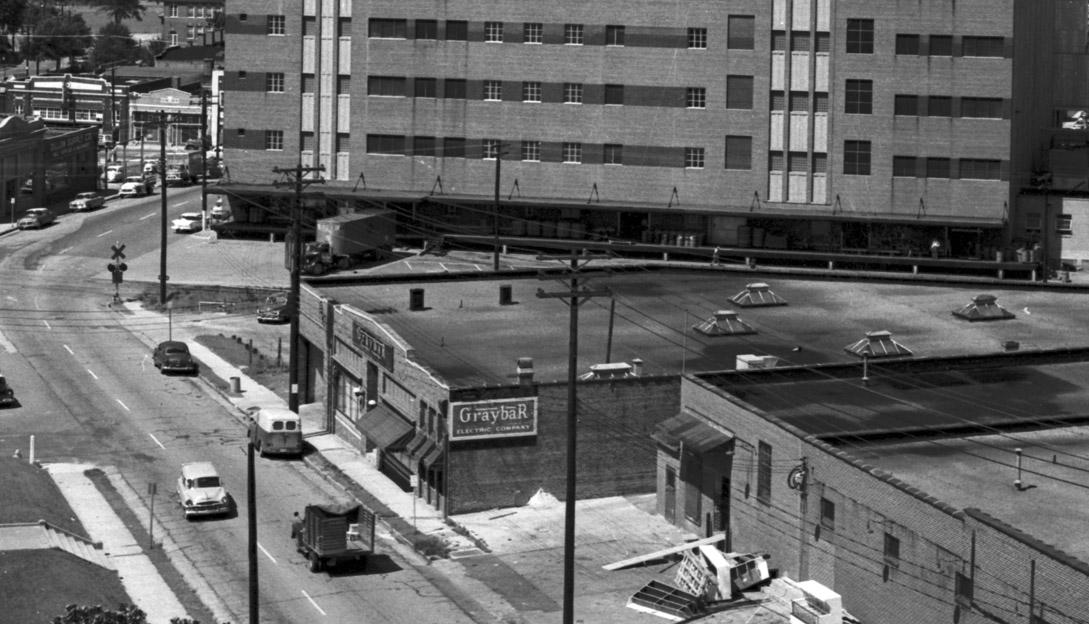
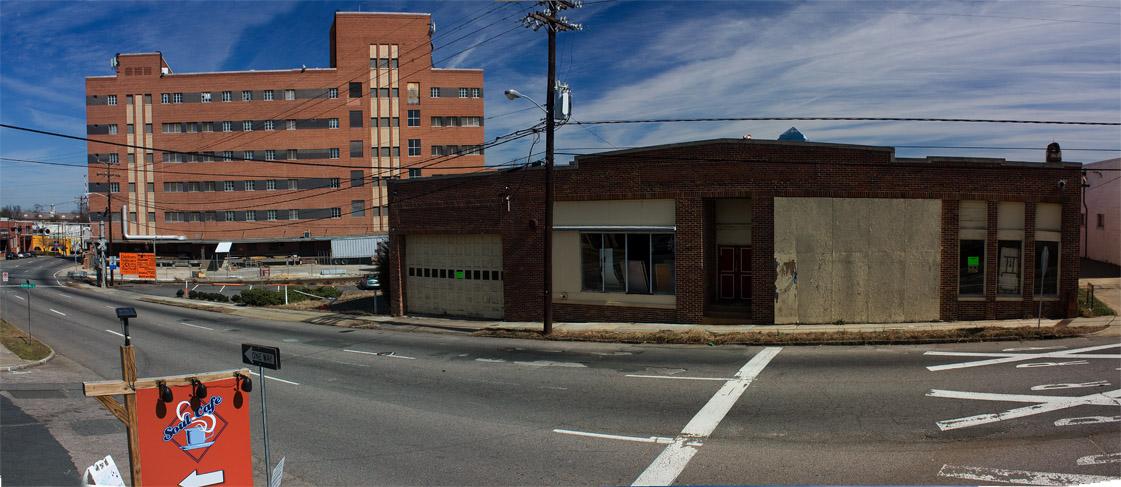
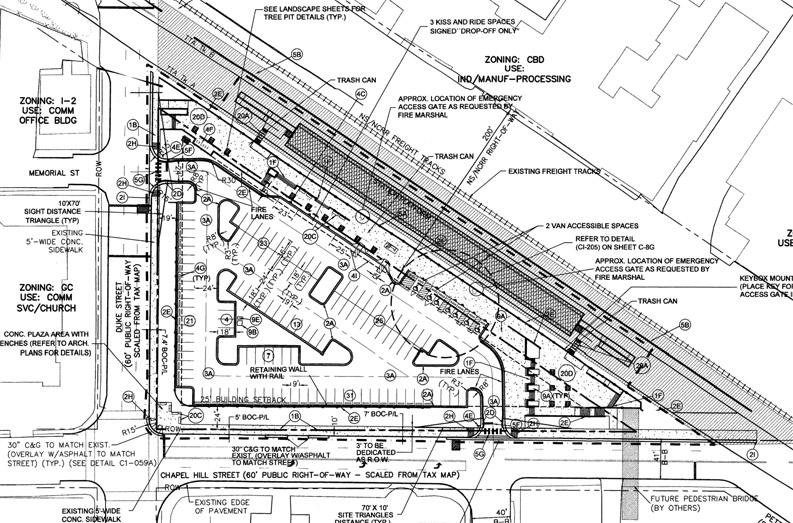
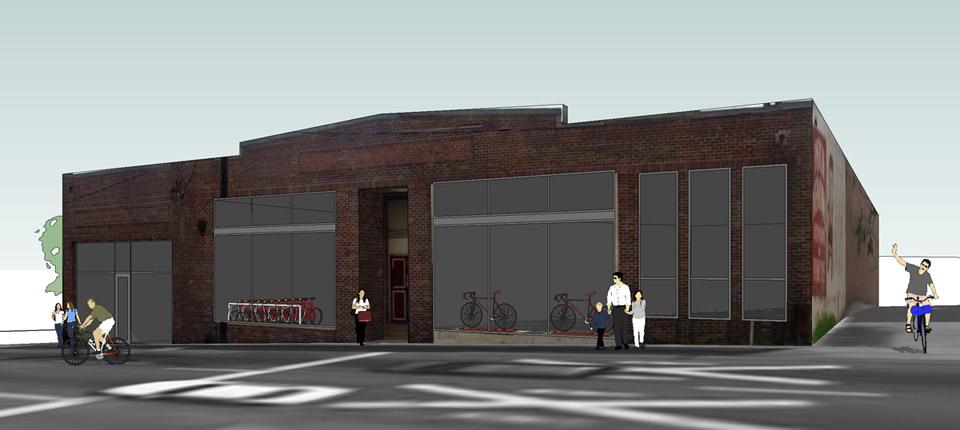
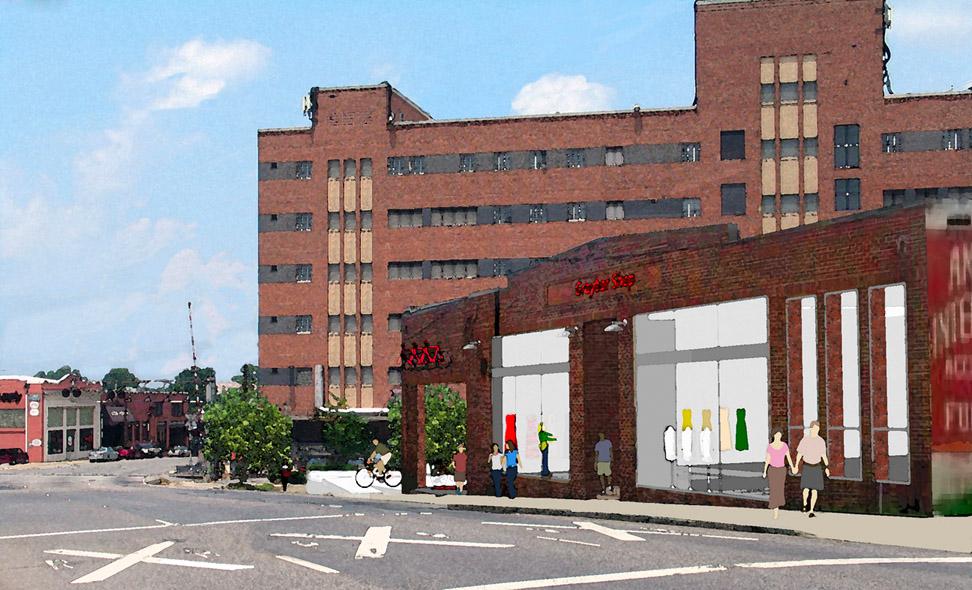
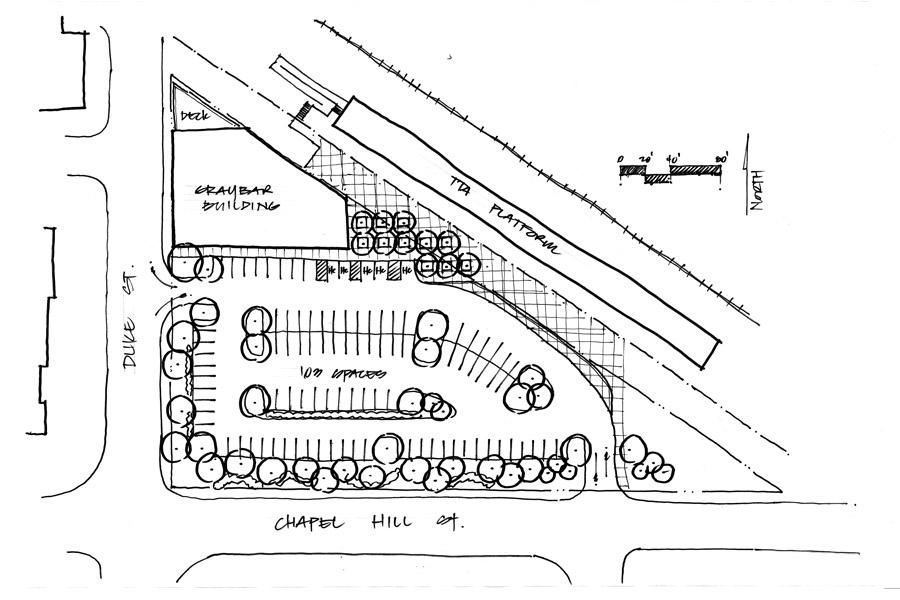
Comments
Submitted by Durham lover (not verified) on Wed, 9/2/2009 - 2:42pm
Indeed, dispiriting to say the least! I love the reworked renderings of what the Graybar building and aread COULD be, but never will. :-(
Boo on TTA!
Submitted by Still a Durham lover (not verified) on Wed, 9/2/2009 - 2:42pm
sorry "aread" should have been "area"
Submitted by Welcome to Dur… (not verified) on Wed, 9/2/2009 - 3:06pm
This is a beautifully comprehensive post, demonstrating a beautifully comprehensive effort. Bravo. Future generations will know that at least someone tried to stop the tide.
Submitted by Anonymous (not verified) on Wed, 9/2/2009 - 4:33pm
so sad-when is Wib moving to Cary?
Submitted by katuah (not verified) on Wed, 9/2/2009 - 4:34pm
Gary, is there anything we can do now? Picket, call our legislators, stage a sit-in or a "fix-in"? Can the Councilmember get NIS to withdraw the condemnation and/or the FoF, and force TTA to go through a preventable process to get a demolition permit? Anything?
Submitted by Brian (not verified) on Wed, 9/2/2009 - 5:59pm
It would be a shame to lose that building. I love it. I have lived in Durham all my life. I remember when I was a kid and my family was coming back from beach vacations. I would be asleep in the back of the car, and when we would get off the freeway on the Duke Street exit, it would wake me up, and the first thing I would recognize was the American International Furniture sign. It signaled that I was home. I have always been fascinated by that building. I even wrote a paper about it when I was in architecture school at State. I always wanted to buy the building to live in. It saddens me to know that all of the people with the power and money to make things better, just constantly make things worse.
Submitted by Anonymous (not verified) on Wed, 9/2/2009 - 6:01pm
"The logic that this building should be torn down seems convoluted and circular - it should be torn down because it needs repair, but it hasn't been maintained because it needs to be torn down."
You nailed it Gary. Catch 22 and Major Major can't hold a candle to the Durham bureaucrats! Sad.
Alas poor Wib, I knew you when...
Submitted by Gary (not verified) on Wed, 9/2/2009 - 9:13pm
Katuah
I'd certainly encourage you to try anything you wish to try; it's never too late until the building is demolished, but I think I've tried everything in my power to no avail.
GK
Submitted by Anonymous (not verified) on Thu, 9/3/2009 - 11:55am
G:
I believe that Cherokee Investments may have significant financial challenges of their own. This is likely their reason for not trying to make something of this space. They were the premier "adaptive reuse, and make it green" operations on the East coast as I recall.
Myers
Submitted by jplien (not verified) on Thu, 9/3/2009 - 3:22pm
All,
Gary is right, it's not too late as long as the building is standing. I would urge everyone to contact their representatives in local and state government, as well as TTA itself. TTA is a public agency, and so it should be responsive to the will of the public. I've posted pleas to the WHH and OWD listserves in an effort to recruit additional support. Those who live in other neighborhoods should do the same. I'd be happy to forward the text of my message to anyone who'd like to send it on.
This approach can work. I remember when a letter from Durham's NC legislative delegation produced a complete reversal on the part of NCSSM in a neighborhood dispute in 2006.
One person in particular to contact is Ellen Reckhow (Durham county commissioner and secretary of TTA's board of trustees). She's already responded to my e-mail saying she will ask the staff to revisit the matter. I'm not naive enough to think that this alone will save the building, but if enough people do the same, it could happen.
Gary has clearly done an enormous amount of work to save this building. If the rest of us take a few minutes to lend our voices to the effort, we can carry the day.
Submitted by David Jeffreys (not verified) on Thu, 9/3/2009 - 8:01pm
Again, Gary, you have demonstrated how useful this blog is, and I hope everyone in Durham who reads it will get involved.
Another possible solution has not been mentioned. If the powers that be insist that the building is going to be demolished, get them to save the streetside facade and have it remain intact. Dress it up possibly with the old Graybar logo if that can be permitted. Then in the meantime, we would have something nice to look at. In the future, a surface parking lot could be built behind the facade if the TTA train ever comes to fruition. Or new stores, such as the bicycle shop idea could be built behind the facade. I've seen many examples in other cities where historic facades are left standing, some as high as 3 or 4 stories and then a building, sometimes even a highrise is built on the lot. Just having a beautiful Graybar facade could be enough until someone in the future finds a reasonable use for the rest of the property.
Submitted by Sean C (not verified) on Thu, 9/3/2009 - 8:09pm
I'm sure this was discussed at some point but can the building be bought?
Submitted by Tom (not verified) on Fri, 9/4/2009 - 12:20am
Yet another building in the firing line that should be saved. I enjoyed reading your post and you can all muster some political will to save it. The comments alone prove how many individuals care. Thanks a lot for posting and good luck.
Submitted by Sean (not verified) on Fri, 9/4/2009 - 12:51am
Gary, thank you so much for your dedication to this building and historic preservation.
Brian, I enjoyed your story though it made my heart sink. A lot.
Submitted by Anne (not verified) on Fri, 9/4/2009 - 11:12pm
I don't know if this makes a difference but years ago (in the 90s) I went to a TTA presentation that covered this station. As I recall this site was substantially less than ideal but was chosen because it was available. The site is so close to Duke St that the gates would be down for as long as a train was at the station regardless of how soon it would actually cross Duke St. So if it were there for 15 minutes loading passengers the gates would be down the entire time. (This is the same problem Amtrack occasionally had when the train missed its mark and parked closer to Duke St at its old station on Chapel Hill St.) The ideal station would be much further from Duke like the new Amtrak Station in the Walker Building.
I'm mystified why we would need 3 different transit stations within a few hundred yards of each other. It would seem to me that TTA should be sharing the Amtrak Station or building a bridge to the railroad from the new multi-modal station on Chapel Hill/Pettigrew and sharing that space. Both of which are much further from Duke St.
Anne Guyton, Durham
Submitted by Freddie (not verified) on Wed, 9/9/2009 - 12:13pm
it is sad indeed. When I first heard about the condemnation of the building, I was very interested in seeing what I can do to create such a thing like what the Durham Bike Co-Op was thinking like the bike transit station. It's exactly what I thought of when I seen the building and location and thought it would make the most sense...Reading that it would not work out because of the TTA wanting immediate destruction is indeed a sad story and shame on them, the city and the people that support the destruction.
Submitted by Anonymous (not verified) on Thu, 10/29/2009 - 12:10am
any updates?
Submitted by Gary (not verified) on Thu, 10/29/2009 - 12:25pm
There was another serious round of fighting to save this building involving a lot of heavy hitters, but Triangle Transit remains steadfastly devoted to demolishing the Graybar building. They simply unrelentingly believe that it is "too far gone" and that something wonderful, yet undefined (and thus not constrained by reality) will replace it someday. Like all matters of faith, evidence to the contrary is irrelevant.
GK
Submitted by Dan S. (not verified) on Thu, 12/3/2009 - 9:17pm
The N&O is reporting that a demolition fence is going up this week.
http://blogs.newsobserver.com/bullseye/triangle-transit-preparing-to-demolish-graybar-building
I so wish that our public transportation agencies were actually responsive to public need.
But then again, it must be nice to rake in tens of millions in federal funding without having done a single thing to address the horrific state of mass transit in the RTP region. Other than, you know, changing the paint scheme of your buses, periodically.
Submitted by Anonymous (not verified) on Sat, 12/5/2009 - 2:41pm
Drove by last night and noted the ugly demo fences surrounding that parcel. Jim Wise's blog says 35-40 days for full demo after asbestos and lead removal.
We could chain ourselves to the demo fence or something. Is there no way to get a court to issue an injunction?
It's kind of ironic that the most likely people to patronize TTA are the ones who would prefer more of a renovation rather than raze solution.
Add new comment
Log in or register to post comments.